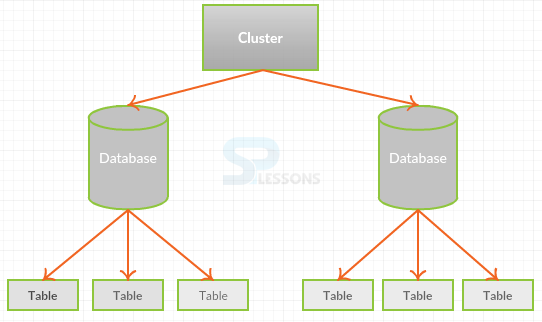 Introduction
Introduction
It is the key section of information management in the database.A table defines an entity,that describes which data should be registered in the database. For instance,the student could be an entity.
Oracle database can be classified into two types.
- Rational tables
- Object tables
 Description
Description
Rational tables have simple columns in the table and are typical table types. Here data can be accessed or arranged in many different ways without having to reorganize the database tables.
Rational tables can also be created in heap organized table, index-organized table and external table.
The create table will create heap organized table by default and heap organized table will not store data contained in rows in proper order.
Index organised table will arrange the data in order based on the primary key values.Index organised table will increase the performance and use disc space efficiently.
External tables will only read the data,whose data is saved outside the database and it's meta data is saved inside the database.
 Syntax
Syntax
create table <table_name>(column_name1 datatype (size),column_name2 datatype (size));
Table_name => The accurate table in the database.
Column_name => The name inserted in the column.
 Examples
Examples
By viewing the below example, creating a simple table can be easily performed.
[sql]create table student_01(stu_id int,stu_name varchar(255),course varchar(2
55),fee int);
Query OK, 0 rows affected (0.36 sec)[/sql]
In the above example, the student_01 table has been created will all the necessary column name values.
 Description
Description
Object table columns corresponds to top level attributes of object types that defines in the data type attributes.
It is a client characterized datatype along with method, names, and attributes. It is an appropriate type of table in which each row serves as an item. And make it achievable to actual-sphere entities models such as seller and purchaser orders in the database as objects.
This doesn't create any storage but creates the logical structure of a table.
 Syntax
Syntax
create table <table_name> as object(column_name1 datatype (size),column_name2 datatype (size));
Table_name => The accurate table in the database.
Object => Is the reference to the table in the database.
Column_name => The name inserted in the column.
 Examples
Examples
By viewing the below example,creating objects in the table can be easily understand.
[sql]create table department_typ AS OBJECT(DEPT_NAME VARCHAR(255),DEPT_ADDRESS VARCHAR(255));
Query OK, 0 rows affected (0.36 sec) [/sql]
In the above example department_typ table has been created will all the necessary column name values as an object reference.
 Description
Description
Cluster tables are appropriate types of tables that exists in the data dictionary.In Oracle,cluster table is a way of arranging the physical placing of tables on a disc commute so as to accelerate I/O execution times.Everything that reduce the input and output conflict in the physical file system will improve its execution in the database.
A table cluster contains a set of counters that serves similar information section and organized jointly, and sharing of columns are generally utilized altogether.
A cluster is a set of tables that contribute simple columns and keeps relevant information in the relevant sections. The clustering of tables in individual data sections consists of rows from different tables. For instance, a section can keep rows of both the departments and employee tables then storing it in an individual table.
Clustering the tables can be done by the key cluster which has common columns. For instance, the employee and department tables contribute to the department_id columns. Cluster key can be specified when creating the table cluster. Clusters table saves relevant rows of distant tables in the similar information sections.
 Conceptual
Conceptual
- When joining cluster table disk input and output size can be reduced.
- Execution time will be faster.
- Little space is required to save relevant tables along with index information.
- Every time tables has to be updated.
- Table requires truncating.
- Read all rows and filter out the values that doesn't needed.
 Points
Points
- A table contain a set of elements.
- Cluster table means joining of multiple tables.
- A relational tables are simple tables used in the database.
- Object tables defines the object for the table name.





